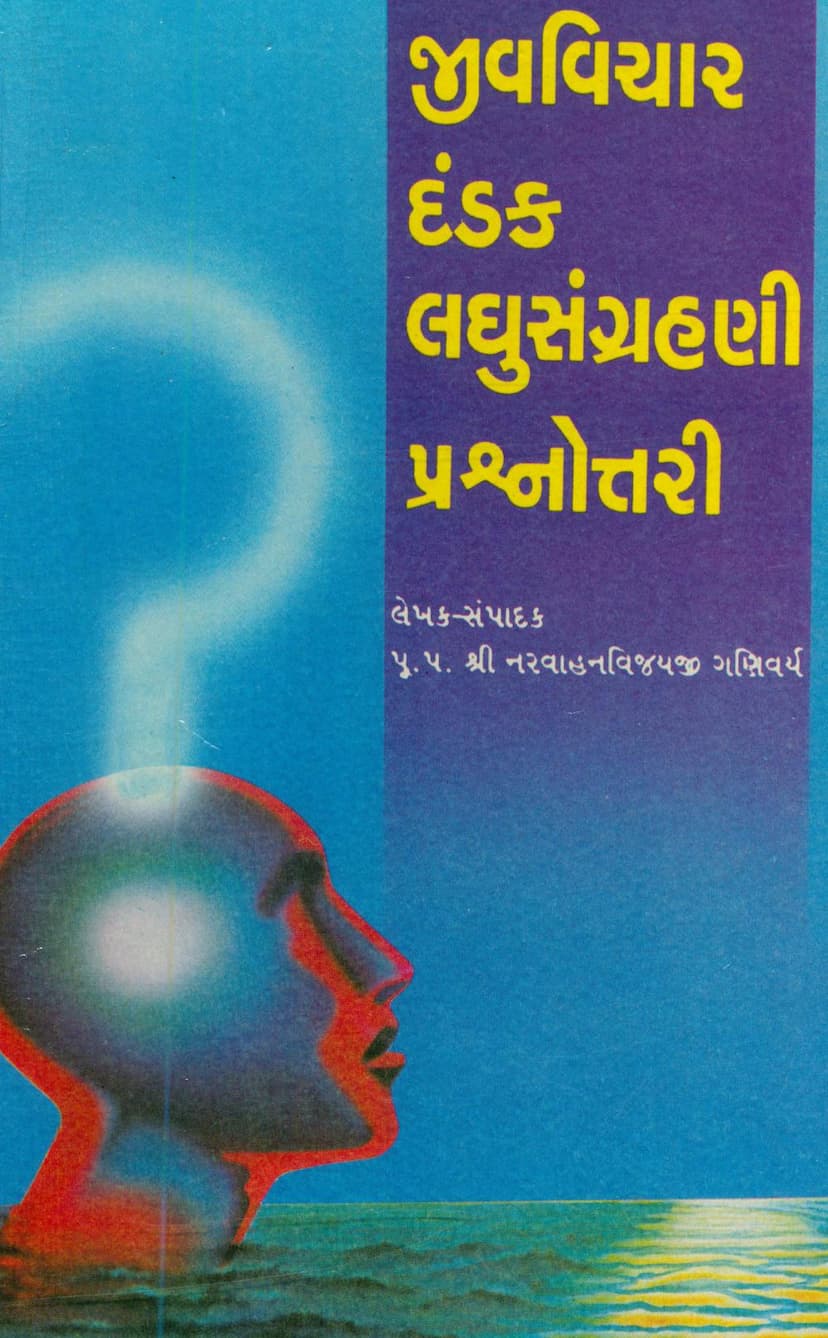Jivvichar Dandak Laghu Sangrahani Prashnottari
Added to library: September 2, 2025

Summary
The book "Jivvichar Dandak Laghu Sangrahani Prashnottari" by Narvahanvijay, published by Padarth Prakashan Trust, is a comprehensive question-and-answer text in Gujarati that delves into Jain philosophy, primarily focusing on the classification and characteristics of souls (Jivas) within the Jain cosmological framework.
Here's a breakdown of its key aspects based on the provided text:
Core Content:
- Jiva (Soul) Classification: The book meticulously explains the different categories of souls (Jivas) according to Jain teachings. It differentiates between mundane souls (Samsari) and liberated souls (Mukta).
- Mundane Souls (Samsari Jivas): It further categorizes mundane souls into two main groups:
- Trasa (Mobile) Souls: These are souls that can move from one place to another.
- Sthavara (Immobile) Souls: These souls are fixed in one place.
- Sthavara (Immobile) Souls: The text details the five types of immobile souls, each corresponding to a fundamental element:
- Pruthvikaya: Earth-bodied souls.
- Apkaya: Water-bodied souls.
- Teukaya: Fire-bodied souls.
- Vayukaya: Air-bodied souls.
- Vanaspatikaya: Plant-bodied souls (including single-sensed plants).
- Detailed Descriptions: For each category of soul, the book provides detailed descriptions, often in a question-and-answer format, covering:
- Number of Types: How many sub-types exist within each category (e.g., five types of Sthavara, four types of Trasa).
- Characteristics: Defining features, such as the number of senses (Indriyas) they possess.
- Paryapti and Aparyapti: The concepts of 'completion' (Paryapti) where beings develop their faculties and 'incompletion' (Aparyapti) where they don't.
- Lifespan (Aayushya): The minimum and maximum lifespans for various types of beings.
- Body Size (Avagahana): The physical dimensions of different beings, often described in incredibly vast units of measurement (Yojanas, Dhanush, Angulas).
- Types of Souls (Bhed): The specific classifications within each category (e.g., microscopic and gross forms of each element).
- Origin (Yoni): The places or circumstances of birth for different beings.
- Karma and Causation: Implicitly, the text touches upon how karma influences the rebirth and state of souls.
- Cosmology: It describes the structure of the universe, including the different realms (Lokas) like the underworld (Adholoka), middle world (Tiryakloka), and upper world (Urdhvaloka), and the geographical details within them (e.g., dimensions of Jambudweepa, Mount Meru, rivers, continents).
- Trasa (Mobile) Souls: The classification extends to two-sensed, three-sensed, four-sensed, and five-sensed souls, detailing their respective lifespans, sensory capabilities, and physical characteristics.
- Five-Sensed Souls (Pancendriya): These are further categorized into:
- Naraki (Hellish Beings): Descriptions of the seven hellish realms and their inhabitants.
- Tiryancho (Animals): Including aquatic, terrestrial, and aerial beings.
- Manushya (Humans): With distinctions based on karmabhumi, akarmabhumi, and antardweepa.
- Deva (Celestial Beings): Describing the different classes of celestial beings (Bhavanpati, Vyantara, Jyotishi, Vaimanika).
- Dandakas: A significant portion of the text deals with "Dandakas," which are categories or classifications of beings. The book lists and elaborates on 24 such Dandakas, covering various stages of existence from the lowest hellish beings to the highest celestial beings, as well as the elemental and plant kingdoms.
- Detailed Numerical Data: The book is rich in numerical data regarding lifespans, body sizes, number of subtypes, and cosmological measurements, reflecting the precision and systematic approach of Jain philosophy.
Author and Publisher:
- Author/Editor: Pujya Panyas Pravar Shri Narvahan Vijayji Ganivarya.
- Publisher: Padarth Prakashan Trust, Ahmedabad.
- Second Edition: The text indicates it is the second edition.
Purpose and Audience:
- Educational: The Q&A format suggests it's primarily an educational text designed to impart knowledge about the classification of souls and Jain cosmology.
- For Seekers of Truth: The opening verses and the publisher's note suggest a purpose of guiding beings toward liberation by understanding the nature of existence and avoiding harm to living beings.
- Jain Practitioners: Likely intended for students of Jainism, monks, nuns, and lay followers interested in deep doctrinal study.
Overall Tone:
- Didactic and Informative: The book aims to instruct and inform the reader about complex Jain concepts in a structured manner.
- Reverential: The initial salutations to the Tirthankaras indicate respect for the teachings and the lineage of Jinas.
Key Takeaway:
"Jivvichar Dandak Laghu Sangrahani Prashnottari" is a foundational Jain text that systematically explains the manifold forms of life and their placement within the Jain universe. It emphasizes the meticulous classification of souls based on their sensory capabilities, lifespans, physical attributes, and states of existence, all within the broader context of Jain cosmology and the path to liberation. The Q&A format makes it accessible for learning and memorization.